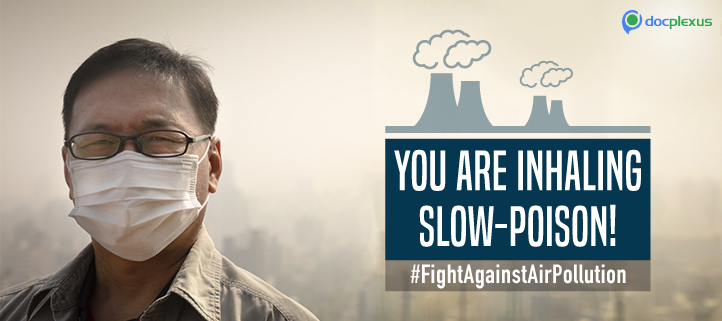
The menace of air pollution in India is taking gigantic proportions, creating severe health hazards for more and more people. 2.5 million deaths in 2015 were caused due to poor air quality related illnesses, the most in any single country. On August 2, 2018, a group of 13 Pulmonologists and Chest Physicians from six cities raised their voices against it, sharing personal experiences on patterns observed among patients with the Union Minister for Environment, Forest and Climate Change, Dr. Harsh Vardhan. In a letter to the minister, they asked to expedite the implementation of emission standards from over 500 coal fired power plants as envisioned in the 2015 amendment to the Environment (Protection) Rules of 1986.
“We would like to share with you that in the recent past, we have seen an unprecedented increase in the number of chest diseases and specially Lung Cancer. In fact, we are seeing increasing number of these cases in the non-smoker population of our country. We are sure that you are aware of the numerous studies available, which have linked the Particulate Matter and the Toxic Gases especially being released by the power plants to Chest Ailments and Lung Cancer,” the letter stated.
The initial deadline for implementation of norms was December 2017 which is now likely to be pushed to 2022 or 2030. Dr. Arvind Kumar, Chairman – Center for Chest Surgery, Director – Institute of Robotic Surgery at Sir Ganga Ram Hospital, and Founder – Lung Care Foundation, feels it is a result of government’s shyness from capital expenditure that would be required to import filtering technology from abroad. According to him, this expenditure is urgently needed in the interest of the health of millions whose health is being affected.
In an exclusive interview with Docplexus, he stated, “If you look at the amount that is spent because of work absenteeism, and treatment and deaths of those who would suffer from these power plants, then I think the amount being spent on the power plants would be much less. On medical grounds, it is an emergency and concrete steps need to be taken urgently.”
He also delineated the health impact of poor air quality, “Particulate matter comes in three sizes- 10 micron, 2.5 micron and 1 micron or less (ultra-fine particles). While PM 10 is stopped in the nose, 2.5 can reach the lungs, PM 1 can enter the blood stream via lungs. The last is the most harmful. The next worst in terms of impact is 2.5. It damages the lungs. Thee various chemicals on the surface of these pollutants, when released, damages every organ in the body.”
He added that it affects the heart where blood pressure increases, hypertension is caused and incidence of heart attack raises by 5 to 10 times. It causes developmental abnormalities in the brain and sub-optimal development of the IQ. In adults, it leads to 5 to 10 times higher incidence of paralysis, brain attack. It affects our kidneys and urinary bladder by increasing the chances of cancer in both. It harms the reproductive system, increasing the chances of pre-mature deaths and causing other problems in pregnant ladies. It also raises the chances of growth retardation in children.
This issue is not new for a city like Delhi. Last year in November, the Capital turned into a gas chamber, with its air quality touching 999, the highest that the machine can read and much above the upper limit of the worst category called ‘Hazardous’. Hospitals recorded a 20 percent increase in cases with pollution-related ailments, and doctors called it a public health emergency.
But, the concern is not exclusive to metropolitans. Cities in the state of Bihar suffer from its repercussions too. It is the second largest cause of pre-mature deaths in Bihar after cardio-vascular diseases. As per a Lancet study about 33 % deaths in the state in 2016 occurred due to air pollution related illness.
The way around, as per media veteran Ravina Raj Kohli, who led the #MyRightToBreathe Movement last year, is community action, “ Air pollution is everyone’s problem, everybody has to be a part of the solution. Each one of us has to demand clean air, not just from our own government but also from our own community and therefore help society as a whole to function better ”.
Her #MyRightToBreathe is a citizens movement that has made the problem more visible and brought it to the drawing rooms of many dignitaries. It focuses on the need to have all the stakeholders at the table and get the discussions going.
Last but not the least, we’d like to quote Dr. Kumar’s very relevant words providing direction to the doctors’ community,
We see effects of pollution right in front of us every day. I don’t think anybody is as aware of the ill effects as doctors. I consider it is our duty to raise our voice, to apprise the people of what’s happening and to arouse them from this sleeping state into realizing that it is a national emergency and it is only the collective desire and collective effort of all of us which can solve this problem. So, doctors should educate all, bring people out of the inertia, let this turn into a people’s movement.
Tell us how you feel the issue impacts people and what else can be done to curb it?
